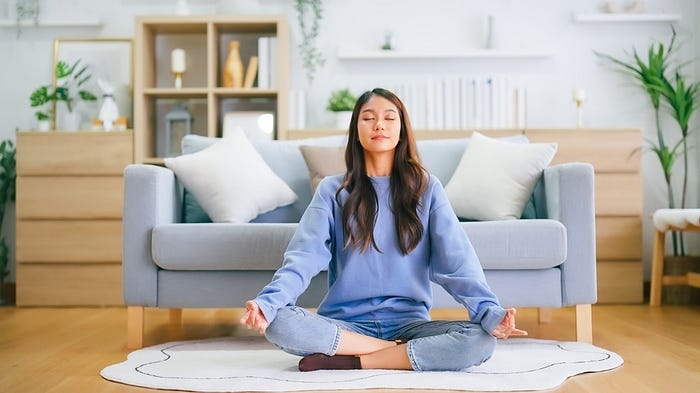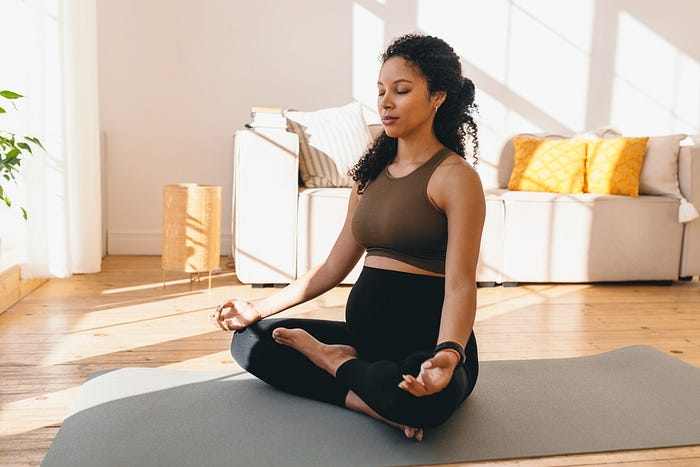Indoor Grounding: Enhancing Your Well-Being at Home
Indoor grounding, also known as earthing, is a way to reconnect your body to the earth’s natural energy indoors. You use various grounding equipment like mats, blankets, socks, and bands. The idea is to get the earth’s electrons that act as antioxidants to help your body.
This method may reduce inflammation, make you sleep better, and improve your mood. By doing indoor grounding every day, you might see your health get better. Plus, you can feel happier and more relaxed at home.

Key Takeaways
- Indoor grounding, or earthing, is a therapeutic technique that involves reconnecting the body to the earth’s natural energy.
- This practice can be done indoors using various equipment such as mats, blankets, socks, and bands.
- Research suggests that indoor grounding can have positive effects, including reduced inflammation, improved sleep, and enhanced mood.
- The earth’s electrons can act as antioxidants, helping to neutralize free radicals and restore the body’s natural defense system.
- Incorporating indoor grounding into your daily routine can enhance your overall well-being at home.
What is Grounding?
Grounding, or earthing, connects your body to the earth’s surface electrically. It is believed to offer benefits by absorbing the earth’s natural electric charge. This charge is said to help our bodies by neutralizing free radicals and boosting our defense system.
The science behind grounding says the earth’s surface carries a negative charge. When we touch the earth, we absorb negative electrons. This process can be good for us, helping to fight off harmful effects.
Benefits of Indoor Grounding
As multiple sources have demonstrated, indoor grounding has several positive health effects. Reduced pain and inflammation is one of the key advantages of indoor grounding. Studies demonstrate that establishing a connection with the Earth lowers levels of inflammation-causing cells. For many people, this equates to less chronic pain.
Furthermore, indoor grounding is linked to better sleep. Those who ground themselves report sleeping through the night and waking up less frequently. Given that more than 30% of Americans have trouble sleeping, grounding yourself could be quite helpful.It’s thought that using a grounding mat or going for a barefoot walk on Earth will make you feel better. A tiny study conducted in 2015 found that participants’ spirits increased after just one hour of grounding. It was shown in another trial to improve sleep quality and reduce the stress hormone cortisol. This demonstrates the advantages for your emotional and mental well-being.
Therefore, you may experience increases in your overall well-being if you incorporate indoor grounding into your daily routine.
Indoor Grounding Techniques
Grounding yourself indoors is a great way to connect your body’s energy to the soil. The use of grounding mats and pads is a popular method. These instruments simulate direct contact with the earth, much like going outside barefoot. For a continuous connection throughout the day, you can set them up on chairs, mattresses, or other surfaces.
Using Grounding Mats and Pads
It’s simple to bring the outside in with grounding mats and pads. Keep them near the vitality of the soil, even inside, by setting them on furniture. People who spend a lot of time indoors, such as office workers or those with limited mobility, will benefit from this.
Grounding Blankets and Sheets
Another option is to use grounding sheets and blankets. They may improve your quality of sleep and help you feel more connected to the earth as you sleep. These products provide a comfortable means of reaping the benefits of staying grounded all night.
Grounding Socks and Bands
There are grounding bands and socks available if you would rather move around grounded. During the day, you wear them on your wrists or feet. This enables you to stay connected to the planet even when you’re moving or exercising.
By using indoor grounding techniques, you can bring the energy of the earth into your house. Even when you are unable to be outside, they can still make you feel connected. Thus, if you use these techniques on a daily basis, your health and well-being may improve.

Indoor Grounding and grounding mats
Using grounding mats is one common method of indoor grounding. We are connected to the earth’s electric charge by these mats. Thus, grounding has several advantages even when we are not outside. They can be placed on the ground, on chairs, or in other seating areas. This maintains our daily connection to the energy of the planet. This is an excellent technique to obtain the healing energy of the earth if you are not able to be outside much. Research indicates that it may be beneficial for things like reduced edema, improved sleep, and elevated mood.

Incorporating Grounding into Your Daily Routine
Make indoor grounding a regular part of your life to reap the maximum benefits. You can include grounding into your workdays, evenings, and mornings. It’s important to include these routines into your everyday life.
Morning Grounding Practices
Use a grounding mat or grounding socks to begin your days. You connect with the energy of the earth with this easy act. It prepares you for a concentrated and successful day.
Grounding While Working
Make use of the grounding pad beneath your desk. During working hours, it maintains your connection to the energy of the earth. For desk workers in particular, this is a great way to balance workplace sitting.
Evening Grounding Rituals
Ground yourself and unwind in the evening. Using a grounding blanket while reading or meditating could do this. It facilitates relaxation, which enhances wellness and sleep quality.
Maintaining regular indoor grounding will have a positive impact on your health. It all comes down to consistency and being mindful of your grounding exercises. This is how anchoring becomes a true way of life.
Grounding for Specific Conditions
Grounding oneself indoors can be beneficial for certain medical conditions. According to studies, it helps with chronic pain. It can also lessen muscular injury and inflammation.

Grounding for Chronic Pain
Grounding helps people who are in chronic pain. It links the body to the electrical charge of the ground. This reduces inflammation and promotes muscle recovery, which lessens discomfort.
Grounding for Stress and Anxiety
Grounding is also beneficial for people who experience stress and anxiety. It improves mood and lessens the signs of depression. This is a methodical approach to addressing these mental health concerns.
Grounding for Insomnia
For insomnia, using grounding mats or bedding can be beneficial. They improve the quality of sleep. They promote healthier sleep by re-establishing our connection to the vitality of the soil.
In addition to medical therapies, grounding is beneficial. It does not take their place. If you want the greatest advise on health care, always consult a doctor.

Grounding and Holistic Well-Being
There are advantages to indoor grounding beyond physical well-being. It can enhance the mind-body connection, which can promote holistic well-being. Mindfulness is associated with grounding. It urges individuals to experience a connection to nature and to the present moment.
Mind-Body Connection
We experience greater calm and a stronger sense of connection to the land’s energies when we are rooted. This integration is good for our mental and emotional well-being. It encourages equilibrium and releases tension.
Grounding as a Mindfulness Practice
Meditation and yoga are excellent complements to grounding techniques. This concoction enhances overall health. It improves a person’s physical, mental, and emotional health.
Combining Grounding with Other Wellness Practices
Grounding yourself indoors complements other wellness techniques effectively.
Yoga routine
Can intensify its impact. Doing yoga poses makes you feel more grounded. This is so because the positions are infused with energy from the earth. The yoga practice also contributes to a stronger sense of grounding.
Meditation
Increases calmness and relaxation. When you meditate, your connection to the vibrations of the ground is deep. Your awareness and inner calm increase as a result. Grounding, yoga, and meditation combined are a potent combination. It improves your well-being and aids in your quest for self-awareness. Your life will be more harmonious, balanced, and clear after using this blend.
Conclusion
Earthing, another name for indoor grounding, provides numerous advantages. It’s a technique that connects the energy of the Earth to our bodies. Sleep, happiness, physical health, and even interior harmony can all benefit from this. Using specialized equipment at home, such as blankets, mats, or stockings, can help achieve this.
While further research is necessary, available data and personal accounts support indoor grounding. Within a health plan, it works well. Those who use this indoor grounding method can take action to enhance their health. They make use of the natural power of Earth to live better.
A number of health improvements are highlighted in the grounding benefits summary. Among them are reduced inflammation and improved sleep. Indoor grounding is a simple approach that people can take to improve their well-being. It demonstrates the potential power of Earth’s energy.
FAQ
What is indoor grounding, and how does it work?
Connecting your body to the energy of the soil is known as indoor grounding, or earthing. Grounding mats, blankets, socks, and bands are used for this. It’s believed that this link benefits your body by lowering inflammation, enhancing mood, and enhancing sleep.
What are the benefits of indoor grounding?
Grounding oneself indoors has a number of advantages. It can reduce pain and inflammation, enhance your sleep, elevate your mood, and reduce stress. It lessens chronic pain by decreasing the cells that cause inflammation, according to studies.
What are the different indoor grounding techniques?
A variety of indoor grounding tools are available. Mats, pads, blankets, and even bands and socks are among them. They simulate the feeling of being barefoot outside and connected to the soil.
How can I incorporate indoor grounding into my daily routine?
Make regular use of indoor grounding to reap its benefits. You can practice self-grounding before going to bed, during work, and in the morning. Make use of blankets in bed and mats beneath your workstation.
Are there any precautions or safety considerations to keep in mind with indoor grounding?
Grounding inside is generally safe. However, make sure your equipment is safe to use and keep it away from electrical and water sources. Individuals who are on medication or have specific medical issues should consult their doctor beforehand.
Can indoor grounding be beneficial for specific health conditions?
Indeed. There is evidence that it can alleviate chronic pain, anxiety, tension, and sleep problems. Grounding offers a natural, all-encompassing solution to various health issues by lowering inflammation and promoting calm.
How can indoor grounding be integrated with other wellness practices?
The benefits of indoor grounding are enhanced when combined with practices like yoga and meditation. It enhances your sense of calm and relaxation, increasing the potency of these earth-energy-based techniques.
What kind of success stories and testimonials have been shared about indoor grounding?
Numerous people have said that indoor grounding has improved their mood, increased their energy, and decreased their discomfort. Their experiences encourage others to try indoor grounding for their health and well-being since they demonstrate the true advantages of it.
Disclaimer: The information provided in this content is for informational purposes only and is not intended as a substitute for professional medical advice, diagnosis, or treatment. Always seek the advice of your physician or other qualified health provider with any questions you may have regarding a medical condition. Never disregard professional medical advice or delay in seeking it because of something you have read on this website or through our affiliate links. The products mentioned are not intended to diagnose, treat, cure, or prevent any disease. Consult your healthcare provider before starting any new supplement regimen. This post contains affiliate links at no cost to you.




